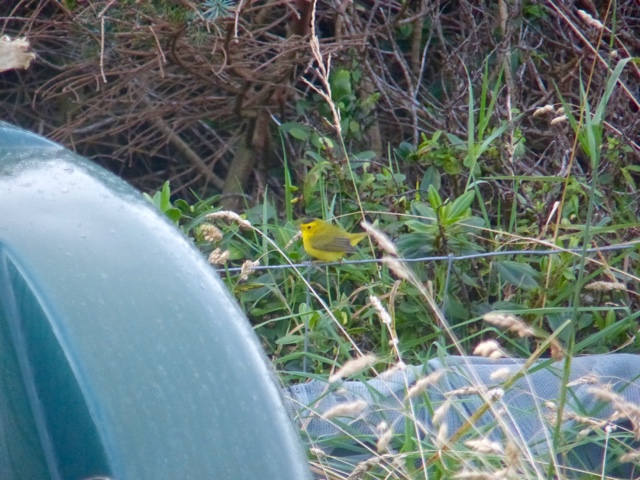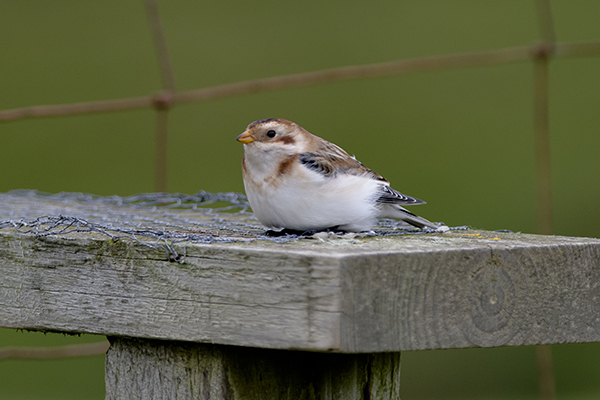This is going to be a long and photo heavy post! After visiting Shetland mainland every autumn since 2007 the opportunity came up to visit Fair Isle and stay at the world famous bird Observatory. My travelling companions this time were Fred & Chris with Mark, Al & Pod electing to stay on the mainland.
Picking Fred up at 04.45 we arrived at Manchester airport in time for a cooked breakfast before our flight to Aberdeen and then onward to Shetland. Meeting Chris, who'd come across on the ferry, we waited at Tingwall airport for news of our flight to Fair isle. Unfortunately, due to low cloud, no flights were able to leave and some had even departed then turned back. Luckily the others were renting a house in Lerwick and had spare beds so we had somewhere to stay for the night and we enjoyed a good few beers!
Next morning there were a few sore heads but we were up and out early to arrive at Tingwall and catch our re-arranged flight to Fair Isle! The planes are small 6 seater Islanders and the flight itself is an experience taking roughly 30 minutes.
Our first glimpse of Fair Isle
Coming in to the airstrip!
Chris and Fred celebrating a safe landing.
Arriving at the 'airport' we were met by Obs warden Dave Parnaby who gave us a lift to our accommodation for the next 6 nights. With rooms sorted we were out in the field and decided to explore the north of the Island.
Our trip started well when we discovered a Turtle Dove near the Obs with a nearby Glossy Ibis that had arrived the day before as one of a party of five.
Bonxies were marauding everywhere looking for an easy meal whilst Gannets and Fulmars fed in huge rafts out on the sea or lazed around on the cliffs.
Gannets roosting on a stack.
Looking back towards North Haven with the supply boat the Good Shepherd hauled out.
Looking back down towards the Bird obs.
North lighthouse.
There is very little cover on Fair isle so to see anything you have to check the geos and walk the ditches and small burns. Birding the geos isn't for the faint hearted, especially if you are afraid of heights, as you're peering over the top of some pretty high cliffs looking down at small warblers and crests feeding on the rocks.
Chris & Fred birding a geo.
For two days the weather was appalling with high winds and torrential rain but we still managed to get out and about. When the weather was good enough we were walking 25 + km's per day. The commonest birds on the island were thrushes, pipits, larks, small warblers and goldcrests. Good numbers of Barnacle and Pinkfooted geese were also seen. With the wind switching south east expectations were high for some good birds and we witnessed the incredible sight of migration in full swing as small passerines and geese flew down the sheltered west side of the island and then up the Gris and over our heads. Of the warblers the commonest was Yellow-browed Warbler. its been an incredible year for these siberian waifs that should be wintering in S E Asia with record numbers being ringed on Fair Isle - including by me! Every geo and bush seemed to hold a Yellow-browed!
Barnacle Geese flying in
Leucistic Barnacle Goose
Male Blackcap feeding in a geo.
Grounded Pinkfooted Goose. Unfortunately many birds were exhausted after their sea crossing and we picked up tired migrants regularly to put them somewhere safe from the islands murderous cats.
Yellow-browed Warbler feeding in a geo.
We soon got into a daily routine with me getting up early to help the Obs staff with the morning heligoland traps taking the birds caught back to the ringing room for ringing and processing. This followed by a cooked breakfast and then a day out in the field with a packed lunch before returning in time for a shower and a quick shot of Fred's excellent bourbon before dinner and a few beers in the obs bar.
Plantation heligoland trap.
We saw some fantastic birds in the hand including a 1st winter Bluethroat and a Siberian Chiffchaff.
Getting out and finding your own birds is what Fair Isle (and Shetland) is about and our 'finds' list included the previously mentioned Paddyfield Warbler (See post below),Olive-backed Pipit, Red-breasted Flycatcher, Richards Pipit ( a flock of 4 although we found out later someone had a flock of 5 flying in off the sea) and Siberian Chiffchaff. As well as these we caught up with birds others had found along with commoner stuff such as Snipe, Jack Snipe, Snow Bunting, Little Bunting and Common Rosefinch (see below).
Snow Bunting.
Common Rosefinch
Little Bunting.
Siberian Chiffchaff.
During our stay there was a marked increase in the number of owls found with Short-eared Owls and a Long-eared owl both being seen. The Long-eared owl chose to roost in the garden of the health centre and could easily be seen from the only road on the island.
Long-eared Owl.
Short-eared Owl
The scenery on Fair Isle is rugged and spectacular and we never tired of the views.
The chapel near Da Water where we found the Paddyfield Warbler.
As well as the migrant birds Fair isle is home to the zetlandica race of Common Starling, its own race of Wren - Fair isle Wren and good numbers of Twite.
All to soon our final day arrived and there was time for one more treat when assistant warden Ciaran pointed out a migratory Woodcok resting up on top of one of the cliffs on the east side.
We left Fair Isle for Shetland mainland where we spent the night at the Sumburgh Hotel (most of it in the bar!) with the occasional foray outside to view the aurora borealis or northern lights.
A great trip that wasn't marred in anyway by missing the Siberian Thrush seen briefly by assistant warden Lee and Fred who called us over when he re-discovered it in a geo where we'd been searching for it! Unfortunately as he yelled us over the bird flew off with a group of Redwing never to be seen again.
The following field sketch is dedicated to Mark & Pod for allowing us to stay at their place in Lerwick when our flight was cancelled.






































































































































